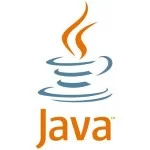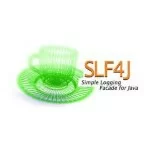Spring: Make your java-based configuration more elegant
Hi everyone, I haven’t written new articles a long period of time. A lot of materials were accumulated which need to be posted in my blog in nearest future. But now I want to talk about Spring MVC application configurations. If to be more precisely, I want to talk about java based Spring configurations.
Despite that Spring java based configuration was introduced in 3.0 version, many developers still use XML-based approach. Personally I use annotation based configurations, because they are more convenient in management, in development and in maintenance. If you have read my blog before you could noticed that in all code examples I used exactly java based configurations.
Not so long time ago I have made a code review of one my project. I noticed that something is wrong with a structure of the configurations. Two aspects were bad as for me:
- All beans were configured in a single class
- Initialization on web app context was too complex
You can witness these two drawbacks in all my examples of Spring MVC applications. For example you can open one of my last tutorials about Spring REST services with CNVR. Take a look there on two classes: WebAppConfig and Initializer.
WebAppConfig
The first one represents the first point in this article. Definitely I need to do something to split beans configuration logically. To resolve this issue I decided to make two steps:
- Move DB configurations in a separate class0102030405060708091011121314151617181920212223242526272829303132333435363738394041424344454647484950515253545556
@Configuration@EnableTransactionManagement@EnableJpaRepositories("com.mobapp.repository")publicclassDataBaseConfig {privatestaticfinalString PROPERTY_NAME_DATABASE_DRIVER ="db.driver";privatestaticfinalString PROPERTY_NAME_DATABASE_PASSWORD ="db.password";privatestaticfinalString PROPERTY_NAME_DATABASE_URL ="db.url";privatestaticfinalString PROPERTY_NAME_DATABASE_USERNAME ="db.username";privatestaticfinalString PROPERTY_NAME_HIBERNATE_DIALECT ="hibernate.dialect";privatestaticfinalString PROPERTY_NAME_HIBERNATE_SHOW_SQL ="hibernate.show_sql";privatestaticfinalString PROPERTY_NAME_ENTITYMANAGER_PACKAGES_TO_SCAN ="entitymanager.packages.to.scan";@ResourceprivateEnvironment env;@BeanpublicDataSource dataSource() {DriverManagerDataSource dataSource =newDriverManagerDataSource();dataSource.setDriverClassName(env.getRequiredProperty(PROPERTY_NAME_DATABASE_DRIVER));dataSource.setUrl(env.getRequiredProperty(PROPERTY_NAME_DATABASE_URL));dataSource.setUsername(env.getRequiredProperty(PROPERTY_NAME_DATABASE_USERNAME));dataSource.setPassword(env.getRequiredProperty(PROPERTY_NAME_DATABASE_PASSWORD));returndataSource;}@BeanpublicLocalContainerEntityManagerFactoryBean entityManagerFactory() {LocalContainerEntityManagerFactoryBean entityManagerFactoryBean =newLocalContainerEntityManagerFactoryBean();entityManagerFactoryBean.setDataSource(dataSource());entityManagerFactoryBean.setPersistenceProviderClass(HibernatePersistence.class);entityManagerFactoryBean.setPackagesToScan(env.getRequiredProperty(PROPERTY_NAME_ENTITYMANAGER_PACKAGES_TO_SCAN));entityManagerFactoryBean.setJpaProperties(hibProperties());returnentityManagerFactoryBean;}privateProperties hibProperties() {Properties properties =newProperties();properties.put(PROPERTY_NAME_HIBERNATE_DIALECT, env.getRequiredProperty(PROPERTY_NAME_HIBERNATE_DIALECT));properties.put(PROPERTY_NAME_HIBERNATE_SHOW_SQL, env.getRequiredProperty(PROPERTY_NAME_HIBERNATE_SHOW_SQL));returnproperties;}@BeanpublicJpaTransactionManager transactionManager() {JpaTransactionManager transactionManager =newJpaTransactionManager();transactionManager.setEntityManagerFactory(entityManagerFactory().getObject());returntransactionManager;}} - Convert WebAppConfig class in a main configuration class and assign to it the rest of configuration (in current case it would be just DataBaseConfig class) classes via @Import annotation.01020304050607080910111213141516171819202122232425262728293031323334353637383940414243444546474849505152535455565758596061
@Configuration@EnableWebMvc@Import({DataBaseConfig.class})@ComponentScan("com.mobapp")@PropertySource("classpath:application.properties")publicclassWebAppConfigextendsWebMvcConfigurerAdapter {@ResourceprivateEnvironment env;@OverridepublicvoidaddResourceHandlers(ResourceHandlerRegistry registry) {registry.addResourceHandler("/resources/**").addResourceLocations("/resources/");}@OverridepublicvoidconfigureContentNegotiation(ContentNegotiationConfigurer configurer) {configurer.favorPathExtension(true).useJaf(false).ignoreAcceptHeader(true).mediaType("html", MediaType.TEXT_HTML).mediaType("json", MediaType.APPLICATION_JSON).defaultContentType(MediaType.TEXT_HTML);}@BeanpublicViewResolver contentNegotiatingViewResolver(ContentNegotiationManager manager) {List< ViewResolver > resolvers =newArrayList< ViewResolver >();InternalResourceViewResolver r1 =newInternalResourceViewResolver();r1.setPrefix("/WEB-INF/pages/");r1.setSuffix(".jsp");r1.setViewClass(JstlView.class);resolvers.add(r1);JsonViewResolver r2 =newJsonViewResolver();resolvers.add(r2);ContentNegotiatingViewResolver resolver =newContentNegotiatingViewResolver();resolver.setViewResolvers(resolvers);resolver.setContentNegotiationManager(manager);returnresolver;}/*** View resolverforreturning JSON in a view-based system. Always returns a* {@linkMappingJacksonJsonView}.*/publicclassJsonViewResolverimplementsViewResolver {publicView resolveViewName(String viewName, Locale locale)throwsException {MappingJacksonJsonView view =newMappingJacksonJsonView();view.setPrettyPrint(true);returnview;}}}In this way you can separate single big configuration class in several smaller which will contain specific configs for them.
Initializer
Code of Initializer class is too verbose in the example which I mentioned above and provided the link to it. I registered there the web application root configurations, mapping and filter. How I can decrease a number of code lines? The answer I got looking on AbstractAnnotationConfigDispatcherServletInitializer class. Look on the class and you will notice that it implements WebApplicationInitializer interface, which I have implmented in my previous version of the Initializer class. So here is a new version of the Initializer:
01 02 03 04 05 06 07 08 09 10 11 12 13 14 15 16 17 18 19 20 21 22 23 | public class Initializer extends AbstractAnnotationConfigDispatcherServletInitializer { @Override protected Class< ? >[] getRootConfigClasses() { return null; } @Override protected Class< ? >[] getServletConfigClasses() { return new Class< ? >[] { WebAppConfig.class }; } @Override protected String[] getServletMappings() { return new String[] { "/" }; } @Override protected Filter[] getServletFilters() { return new Filter[] { new HiddenHttpMethodFilter() }; }} |
Thank to these two steps I have made my configurations for Spring MVC application more elegant. Now you can do it too. Good luck





